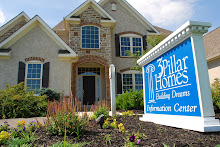Lighting is one of the easiest, least expensive and most effective ways to reduce a home's energy consumption and utility costs.
The quickest way to realize energy and cost savings may seem too good to be true. All it requires is replacing old fashioned incandescent light bulbs with compact fluorescent lights or CFLs. Bulbs that qualify under the federal Energy Star program (go to www.energystar.gov) use 67 percent less energy. These upgraded bulbs also generate 70 percent less heat than incandescent bulbs and last up to 10 times longer.
In addition to identifying the best compact fluorescent lights, Energy Star also qualifies complete CFL-compatible fixtures, from floor lamps to sconces to porch lights, in just about every style and price range. The federal program also offers an Advanced Lighting Package to help builders and home buyers find and specify qualified fixtures.
Lighting design is critical to efficient lighting use. Good schemes combine general lighting (usually overhead) with task-specific, security, and decorative lighting. Such specialized lighting design is appropriate both inside and outside a home to enhance safety and to emphasize the architectural lines of a home or a room, while simultaneously increasing energy efficiency. Of course, any good lighting design maximizes the use of daylight to supplement artificial light, thereby reducing both energy consumption and glare.
Besides the fixtures and bulbs themselves, control of a home's lighting is an essential part of a systematic approach to energy efficiency and green building. The efficiencies of high-performance lighting -- especially when combined with window and glass door shading systems that regulate valuable daylight -- can only be realized under a concerted control scheme.
A new generation of lighting control mechanisms combines style, convenience, and technology. Today's lighting controls are far more than simple on/off switches. Instead, they offer multi-tasking capabilities and multiple modes (or scenes) so that lights are used only when and where needed. Furthermore, instead of a central "processor" for all the lights in a home, the latest systems feature electronic (and ergonomic) touch pads and wall-mounted controls throughout the home that can be reprogrammed, replaced, and maintained at each location without affecting or shutting down the entire system. At the same time, each touch pad can integrate with others for optimum control.
For even greater convenience, lighting systems can include handheld devices for remote operation. Key fobs and other handy gadgets allow a homeowner to trigger a particular lighting scheme inside the home when the garage door is opened from the car. Another function might create a lighted path to safety if a fire alarm is engaged.
By switching to energy-efficient bulbs and light fixtures, a homeowner can realize immediate cost savings while conserving energy. High-tech home lighting systems can get the most from more elaborate and area-specific lighting designs that incorporate several energy-conscious products, such as window glass shading systems, as well as energy efficient fixtures. With both wall-mounted and wireless handheld devices, all elements of the lighting design can be smoothly integrated, including that most old-fashioned and efficient light source, the sun.
skip to main |
skip to sidebar
We are a new home builder offering custom home plans to meet your lifestyle and budget. Whether you are in the market for a new, semi custom or custom home, we can help you achieve your dream.
3 Pillar Homes
5710 Delano Ave
Lewis Center, OH 43035
(740) 548-8599




